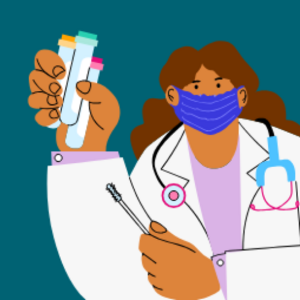
Ensure your health. Get tested today.
Convenient lab testing at your fingertips at more than 5,000 locations nationally. Consult with a doctor, or get tested on your own.

Getting tested for chlamydia might sound a little nerve-racking, but it’s one of the smartest moves you can make for your health. Chlamydia is a common sexually transmitted infection (STI) that often doesn’t cause any symptoms—so the only way to know for sure if you have it is to get tested. Luckily, testing is quick, simple, and totally manageable. In this guide, we’ll break down everything you need to know, including what chlamydia is, who should get tested, how the test works, what your results mean, and what happens next.
Chlamydia is a bacterial infection that’s passed through sexual contact—vaginal, anal, or oral. It's caused by the bacteria Chlamydia trachomatis. It’s one of the most commonly reported STIs in the United States, especially among young adults. According to the CDC, chlamydia affects over 1.6 million people each year in the U.S. alone.
Both men and women can get chlamydia, and it can lead to serious health problems if left untreated—like infertility or pelvic inflammatory disease. The good news? Chlamydia is 100% curable with antibiotics.
Even if you feel totally fine, you could still have chlamydia. That’s why regular STD testing is so important.
The CDC explains that you should get tested for chlamydia if:
Statistically, if any of these are true for you, you could be at higher risk of getting chlamydia. Getting tested regularly helps protect not just your health but your partner’s health, too.
The process is easy and usually painless. Here are the most common testing methods:
You usually don’t need to do much to prepare — just avoid urinating for at least one hour before a urine test.
If you’re going to an urgent care or clinic for a chlamydia test, here’s what a typical visit might look like:
Most appointments take 15–30 minutes, and staff members are trained to make the experience as comfortable and private as possible.
It depends on the clinic, but most results are ready within 1–3 business days. Some places even offer rapid tests that give you results the same day.
You’ll typically receive your results through:
Let’s break down what your results mean:
Don’t panic if your result is positive — it’s very treatable. A provider will guide you through the next steps. Sometimes, results can be false positive (you don’t have it, but the test says you do) or false negative (you do have it, but the test misses it). This is rare, but if you have symptoms or a known exposure, your provider might suggest retesting. If you test positive, your partner(s) should get tested and treated, too. You may also need to retest after about 3 months to make sure it’s fully cleared.
It’s totally normal to feel anxious before getting an STD test. You might worry about what the results could say or feel embarrassed about the process. But here’s the truth—getting tested is responsible, not shameful. Healthcare providers do these tests all the time, and they’re not there to judge you. They’re there to help you stay healthy.
If you’re feeling unsure, bring a friend for support, write down questions ahead of time, or choose a clinic that offers online booking and private testing options. Taking control of your sexual health is empowering — and once it’s done, you’ll be glad you didn’t put it off.
Not sure how to bring it up? Try something simple like:
These conversations might feel awkward at first, but they show mature and caring attitudes. Testing with your partner can even make you feel closer and more secure in your relationship.
Once you’ve taken care of testing and treatment, prevention is your next best friend. Here’s how to reduce your risk:
Getting tested isn’t a one-time thing — it’s part of maintaining a healthy lifestyle, just like going to the dentist or getting your annual physical.
Chlamydia testing is a simple step that can make a big difference in your health. If you think you might need a test — or if it’s just time for a check-up — book a visit through Solv. Use our site to find nearby clinics that offer STD testing for chlamydia, see real-time availability, and get care fast.
Chlamydia is a bacterial infection that is transmitted through sexual contact, either vaginal, anal, or oral. It's caused by the bacteria Chlamydia trachomatis and is one of the most commonly reported sexually transmitted infections (STIs) in the United States.
If you are sexually active and under age 25, have multiple or new sex partners, don't always use condoms, have had a partner who tested positive for an STI, or if you're pregnant or planning to become pregnant, you should get tested for Chlamydia. Regular testing is important because Chlamydia often doesn't cause any symptoms, so the only way to know if you have it is to get tested.
The Chlamydia test is usually done through a urine test or a swab test. For the urine test, you provide a sample of your pee. For the swab test, a sample is collected from inside the vagina, urethra, or rectum. It's an easy and usually painless process.
Most test results are ready within 1–3 business days, though some clinics offer rapid tests that give you results the same day. The results are typically delivered through a secure online portal, a phone call or text, or from a follow-up visit, depending on where you were tested.
A negative result means no Chlamydia bacteria were found and you're in the clear. A positive result means Chlamydia was detected, and you'll need a round of antibiotics. If you test positive, your partner(s) should also get tested and treated. You may also need to retest after about 3 months to make sure it’s fully cleared. If your test is negative, you should continue to protect your health with regular STD testing, consistent use of protection, and open communication with your partners about STI testing.

Convenient lab testing at your fingertips at more than 5,000 locations nationally. Consult with a doctor, or get tested on your own.